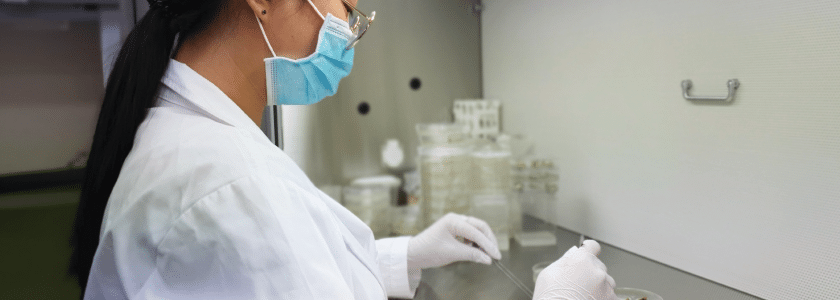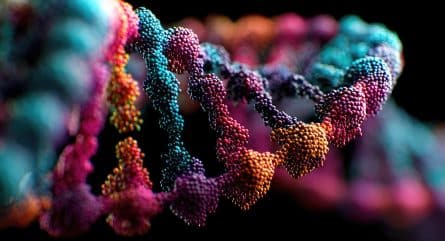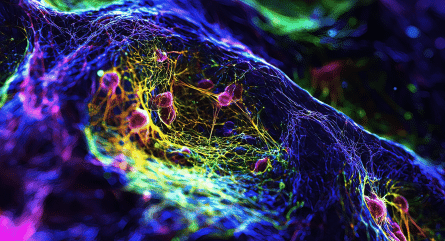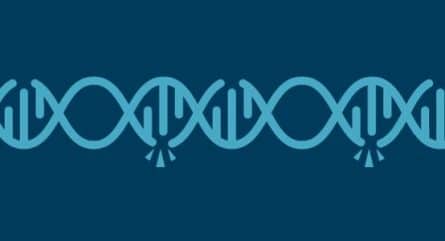Cas9 and Cas12a enzymes have totally changed the world of genome editing, but they have their limitations—especially when it comes to making large deletions. Cas3 may change that.
A Cas3 system capable of large genomic deletions was recently described in Nature Methods.
Cas3 is an ATP-dependent enzyme that degrades DNA as a part of CRISPR-based bacterial immunity.
A 2019 paper in Molecular Cell by a Cornell researcher described for the first time the use of Cas3 in human cells. That researcher, Ailong Ke, used Cas3 to erase long stretches of DNA from a target site in the human genome—something not easily done in more traditional Cas9 systems. Potential application areas include treatment of patients with herpes simplex, Epstein-Barr, or hepatitis B viruses.
“The CRISPR-Cas3 technology also allows researchers to scan through the genome and detect non-coding genetic elements, which make up 98% of our genome but have not been well characterized,” noted a press release from Cornell. “These elements act as regulators that control the expression of proteins in coding genes, and they’ve been found to be pivotal for cell differentiation and sex determination. CRISPR-Cas3 could be used to efficiently screen for non-coding genetic elements and erase long sequences of DNA. Once erased, researchers may look to see what functions are missing in an organism, to determine the role of that genetic element.”
In the new finding, scientists from the University of California at San Francisco repurposed and optimized a Type 1-C CRISPR system for endogenous and heterologous genome editing in microbes.
DNA cleavage guided by a single CRISPR RNA generated deletions up to 424 kilobases with nearly 100% efficiency. Thanks to bidirectional deletions relative to the CRISPR RNA target site, large genomic deletions surrounding the programmed target site were possible.
The bottom line, the researchers wrote, is that using Cas3 to make large genomic deletions will permit manipulating repetitive and noncoding regions and allow the probing of mass genomes.
In these successful Cas3 experiments, large deletion boundaries were dictated by a homology-directed repair template—something that Cas9 couldn’t do.
These findings hint at broader future uses for Cas3, which has been likened not to a pair of scissors but instead to a “DNA shredder with a motor.”
“Cas9 is a molecular scissor that goes where you want it and snips once,” said the University of Michigan’s Yan Zhang. “Cas3 goes where you want it, travels along the chromosome, and makes a spectrum of deletions tens of kilobases long.”
That makes Cas3 a powerful screener and means it could determine which large areas of the genome are relevant for specific diseases or are most important in viruses, although the tool is not risk-free, as the precise delineation of deletion boundaries is not always possible.
CRISPR-Cascade emerges as an ally in the fight against diseases
A complex of proteins and RNA named Cascade (“CRISPR-associated complex for antiviral defense”) could also emerge as an ally in disease fighting.
CRISPR-Cascade can deter phages and may be helpful to scientists designing microbes that are highly resistant to viruses. It could also help the pharmaceutical industry, which employs genetically engineered yeast and bacteria to produce drugs like insulin.
DNA targeting by Cascade is key for some CRISPR systems because it triggers the destructive catalysis of Cas3, notes one review of the technology. Cas3-Cascade will likely target genetic insertions or deletions when delivered into cells as proteins or expressed endogenously, and low off-target effects have been seen in other studies.
“These reports indicate the emergence of Cascade as a valuable method for targeted genome editing, offering advantages over simpler Cas9/Cas12 editing enzymes that override the disadvantage of Cascade’s multi-subunit structure,” notes the study in Genes. “The diversity of Cascades available from natural sources offers many opportunities for fine-tuning Cascade for this purpose.”
Want to learn more about CRISPR or get started? Check out IDT’s CRISPR basics handbook.



























